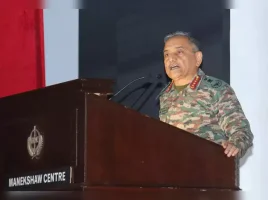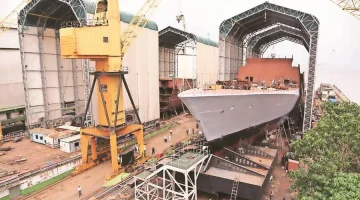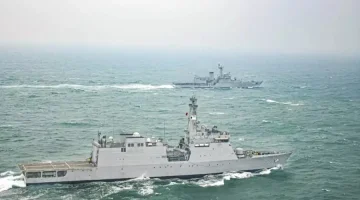- Views: 403
- Replies: 6
In a move prioritizing platform standardization and operational readiness, the Indian Army has decided to continue utilizing German-made MTU diesel engines for its second batch of 100 K-9 Vajra self-propelled howitzers, sources have confirmed.
This decision underscores the Army's confidence in the reliability and performance of the MTU power plants, which have already proven their mettle in the first batch of these artillery systems deployed across varied terrains, including high-altitude border regions.
The first batch of 100 K-9 Vajra howitzers, a variant of the South Korean K9 Thunder, was manufactured in India by Larsen & Toubro (L&T) under license from Hanwha Aerospace Co. These initial units were equipped with MTU's 1,000 horsepower diesel engines coupled with Allison Transmission X1100-5A3 automatic transmissions.
This engine-transmission combination is the original configuration of K9 Thunder as well. According to open-source data, the MTU engine model used in the K9 Thunder is likely the MTU MT 881 Ka-500, an 8-cylinder water-cooled diesel engine, renowned for its robust design and suitability for demanding military applications.
While a newer engine option, the STX Engine SMV1000, a 735 kW (1,000 hp) 8-cylinder water-cooled diesel engine developed by the South Korean firm STX Engine, was available for consideration, the Indian Army opted to maintain continuity with the MTU engines.
The STX Engine SMV1000 is reportedly based on a license-produced version of the MTU engine, indicating a technological lineage shared with the chosen power plant.
However, staying with the tried and tested MTU engines for the second batch of K-9 Vajras supports the Army's strategic objective of ensuring platform standardization, which simplifies logistics, maintenance, and training across the artillery units operating these howitzers.
The K-9 Vajra program is a flagship project under India's "Make in India" initiative, which aims to boost domestic defence manufacturing capabilities. The first batch of 100 howitzers was completed in February 2021 with 51% indigenization.
While the selection of a foreign-made engine might appear to contradict this initiative, the decision highlights the Army's pragmatic approach to balancing indigenous development with operational requirements and the need for proven technologies, especially in critical areas like artillery. K9 Vajra has a maximum range of 40 km with standard ammunition and a rate of fire of 6-8 rounds per minute.
The Indian Army's decision to retain the MTU engines for the second batch of K-9 Vajras does not signify a rejection of future technological advancements. The Army continues to actively assess emerging technologies for other defense platforms and upcoming procurements.
The long-term vision remains focused on enhancing the self-reliance of India's defense sector, in line with the "Make in India" initiative, but without compromising on the operational effectiveness and reliability demonstrated by established systems like the MTU-powered K-9 Vajra.




